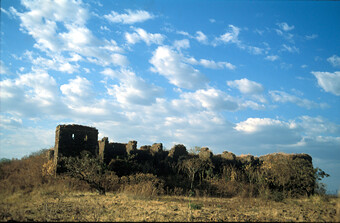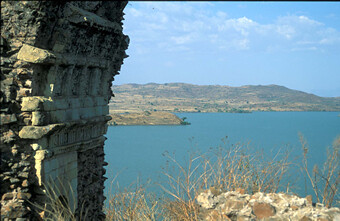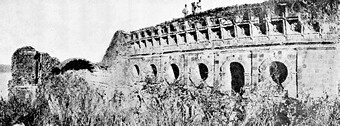| Home | Architecture | Art | Books & Maps | Manuscripts | Historia da Ethiopia | Credits & Contacts |
Gorgora Nova - Maryam Gemb The site the Jesuit documents refer to as Gorgora Nova is situated on a small peninsula on the northern side of Lake Tana, district of Gondar-Zuriya, in the region of Dambya. Between 1611 and 1618, Gorgora Nova became the royal camp (katama) of King Susneyos,who had decided to abandon Dakana due to an epidemic caused by the place’s poor health conditions. Next to the remains of a yet unidentified building (a royal palace and/or a Jesuit residence?) whose walls are still standing, a large area of debris marks what was once the imposing structure of a single nave “baroque” Catholic church. After centuries of neglect, it collapsed in the summer of 1995. The only standing sections – the southern tip of the high altar and the lower part of the outer wall – testify to the richness and sophistication of the stonework and the overall monumental scale of the building. The temple was arguably built circa 1626, under the supervision of Brother Juan Martinez (or João Martins), by direct order of King Susneyos who, after having moved the royal camp to Dankaz (in 1618), wished that a Catholic church in stone and mortar be erected in Gorgora Nova and entrusted to the Jesuits, for their missionary work.
Martula Maryam church (Gojam)
|
|
| Plan of Gorgora Nova | |
|
| Home | Architecture | Art | Books & Maps | Manuscripts | Historia da Ethiopia | Credits & Contacts |






